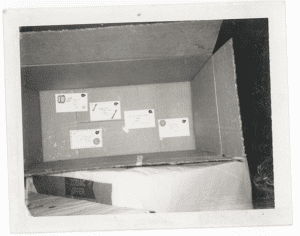In the course of writing the Good Grandpa book I had wonderful conversations with many grandpas, including Reggie Williams, a retired NFL pro who’d played with the Cincinnati Bengals in…
In the course of writing the Good Grandpa book I had wonderful conversations with many grandpas, including Reggie Williams, a retired NFL pro who’d played with the Cincinnati Bengals in two superbowls.
I learned that early in his life, when he was starting out on the football team at Dartmouth college, several of his teammates walked out of the locker room because he was Black. But Reggie had been taught by his father to use that adversity as his fuel to outperform others on the playing field. And that’s exactly what he did. But Reggie didn’t stop there. When I asked him for an example of a time he burned that fuel to win, he told me something remarkable (I won’t tell you the whole story now because I don’t want to ruin the book for you, but here it is in brief — with a new twist that happened just this week).
The instance he cited did not involve football at all.
Towards the end of his playing career, Reggie served as a councilman with the city of Cincinnati, where he led an initiative to divest the city’s pension from South Africa’s Apartheid regime. Reggie didn’t fully understand the impact of this action until later. After the Apartheid regime had crumbled, Reggie got a call from Bishop Desmond Tutu — a call to thank him personally — because Cincinnati’s divestiture had a snowball effect globally. It was, according to Tutu, the straw that broke the camel’s back.
Given what’s going on in our world today (political turmoil as just one example) Reggie urged me to write about the need for grandparents to promote moral imperatives in society. I took that advice to heart.
Just this week, I heard news that showed the enduring power of moral imperatives.
Someone at South Africa History Online, an organization that archives and shares the official history of the country, had heard about Reggie’s work to end Apartheid, but not the full story. Nor was the story included in the country’s history books. That is about to change. A chapter excerpt from Good Grandpa that features Reggie’s role in ending Apartheid will soon be archived and shared widely on the South Africa History Online site, reaching about 6 million readers each year.

South Africa History Online is the most comprehensive resource on South African history and culture.
Future generations of South Africans will know the full story of an American football player who helped liberate them from oppression.
It’s an honor to help tell Reggie’s story, but beyond that I’m floored to see just how powerful and enduring the idea of moral imperatives is. Being kind, compassionate and fearless—all grounded with a moral compass—provides us with a map for taking action in a troubled world. As grandparents, we have an opportunity to share this kind of wisdom with our families and communities. This is how we can make a lasting difference.
Author’s note: If you’d like to share your story about moral imperatives, please post a comment. Or reach out to me via the email in the contact section of the blog.





